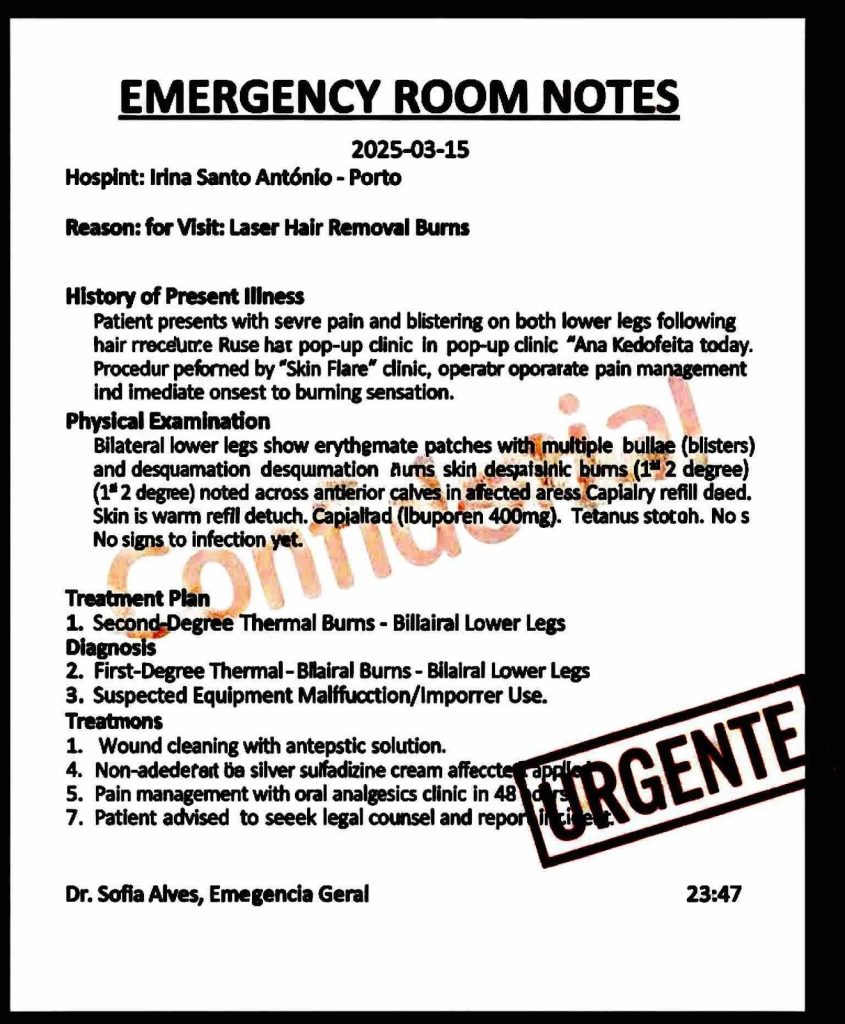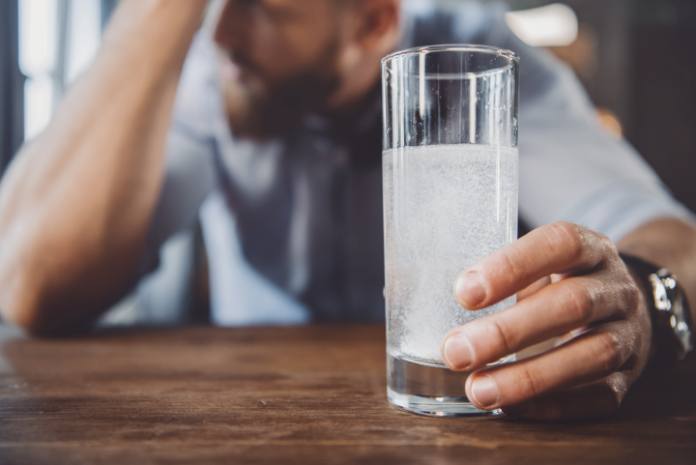The unexpected health impacts of wearable tech
When Tim Cook took the stage at a September 2014 event to announce the hotly anticipated, long-rumored Apple Watch, he described it as a “comprehensive health and fitness device.” The announcement set the foundation for what the company thought smartwatches and wearable devices would be — not just for fun, not just for notifications, but for your health.
It was a big promise for a new, unproven product, made at a time when no one was quite sure what smartwatches were for or what they might be able to do. In the years before the Apple Watch launched, similar devices were steadily flooding the market. “It looked like the world would soon be awash in smartwatches. Samsung, Sony, LG, Asus, Motorola, Pebble, Meta — companies big and small attempted to find out what people want their wrists to do,” wrote David Pierce, then the deputy editor at The Verge. There didn’t seem to be a clear answer. Dan Seifert, who runs The Verge’s reviews desk, wondered in 2014 if there even needed to be an answer: maybe there could just be a range of watches, each with a different focus.
At first, Apple didn’t appear to have a good answer, either. The company over-indexed on apps and communication, while its health features remained basic. The watch wasn’t smart enough yet and didn’t feel essential to a daily routine, Walt Mossberg said in one 2016 column. “It needs a capability more compelling than what’s out there so far,” he wrote.
But Apple continued to sharpen its focus on fitness, and smartwatches became more and more popular. Sales for all smartwatches, not just Apple Watches, went up 61 percent in 2018. And their features started to fit more closely into the framework laid out by Cook in 2014. People were using the devices to monitor their health — tracking their heart rate, their steps, and their sleep. And gradually, more and more of them started to bring that information along to their doctors appointments.
The permeation through healthcare is particularly noticeable in three areas: cardiology, sleep medicine, and sports medicine. Smartwatches made by Apple, Fitbit, Withings, Samsung, and other companies have features specific to each of those fields, and over the past decade, the devices became impossible for doctors to ignore.
“People come in and they have their device, and they’ve downloaded that data, and they want to show it to you,” says Matthew Ebben, a sleep specialist at Weill Cornell Medicine in New York. “It happens all the time.”
The Verge asked cardiologists, sleep doctors, and sports physicians how all of that data influences their interactions with patients. For better or for worse, they know it’s here to stay.
Four years after Cook called Apple’s smartwatch a health device, he was back to tout bigger claims: Apple Watches could be lifesaving. The company announced that it had Food and Drug Administration clearance for an app that could detect irregular heart rhythms. The Apple Watch was now officially a medical device and was allowed to tell people that they might have a medical problem.
The app was a big step for Apple, and a big step for smartwatches generally — soon after, Fitbit, Withings, and Samsung all added programs to detect irregular heart rhythms. Early on, though, many doctors were hesitant to embrace the tech. They told The Verge they were worried that there could be false positive readings that could push people to seek out unnecessary medical care, straining the system.
Five or six years ago, cardiologists started to see a trickle of patients bring in heart rate data from smartwatches. But a few months after the FDA cleared the Apple Watch’s app in 2018, things changed. “People were watching ads and hearing Tim Cook say that it’s a lifesaving device. So we started getting a lot more of those patients,” says Mohamed Elshazly, a cardiac electrophysiologist at the Cleveland Clinic. “We have definitely seen an uptick in the last two to three years.”
:no_upscale()/cdn.vox-cdn.com/uploads/chorus_asset/file/22967879/dseifert_200930_4218_0007.0.jpg)
Elshazly remembers the first time he talked with a patient about their Apple Watch. Around four years ago, a man in his 60s — an active runner — came to see him after having occasional heart palpitations for a year. Other doctors hadn’t been able to offer a diagnosis because he hadn’t been wearing a heart monitor during any of those incidents.
“Then I looked at talking to him, and I’m looking at his hand, and he’s wearing an Apple Watch,” Elshazly says. When the Apple Watch detects an abnormal heart rhythm, it prompts the user to use their index finger to take an EKG reading on the watch. The patient had followed those directions during one of the palpitations. Elshazly asked to see the patient’s phone, pulled up the health app, and looked at the reading. “It was atrial fibrillation,” he says. “So I was able to tell the patient, we have a diagnosis.”
Four years later, wearables are a regular part of patient visits. Sometimes, patients come into the office with readouts from their device that they want to show the doctor. Other visits are more like Elshazly’s first encounter with an Apple Watch — he spots a wearable on their wrist and asks about it.
In many ways, they’ve been helpful to cardiologists and their patients. Before, it could be challenging to diagnose people with heart conditions that cause abnormal heart rhythms, like atrial fibrillation. The conditions don’t mean someone’s heart is having problems all the time — it may flutter or feel strange for a moment before returning to normal. Doctors would send a patient home for a week or so with a heart monitor to try to catch one of the incidents. But if a flutter didn’t happen in that window, they sometimes resorted to surgically implanting a device in the patient’s chest to track heart rhythms.
“It’s an invasive procedure and quite a bit more expensive than an Apple Watch,” says Byron Allen, a cardiologist and clinical professor at the University of California at Irvine. Wearable devices like the Apple Watch and Fitbits, which also have an electrocardiogram feature, make it easier for doctors to monitor patients at home. “They also let patients be more engaged in their own care,” he says.
Most doctors still wouldn’t actively recommend a cardiac patient go out and buy a wearable device as part of their treatment, Elshazly says — they’re still fairly new, and while most people have stories of times when they were effective, there isn’t good comprehensive data on how much of a difference they make in public health overall. But if someone already has a device, doctors should make use of the data they offer, he says.
But there are downsides to the influx of wearable data, Allen says — those early worries about false positives proved valid. He estimates around a third of patients who come in worried about an Apple Watch notification have a false positive reading. “Those cause anxiety for the patient, and it takes quite a bit of time to sort through,” he says.
Doctors can also struggle to manage the sheer volume of heart rate and heart rhythm information wearable devices can collect. It’s not high enough yet to be entirely overwhelming, but it’s enough that cardiologists know they need to start figuring out how to sort through and manage it. “The engineers have been able to give us all this data, and create all these sensors for us,” Elshazly says. “Now it’s up to us to analyze that data and figure out how to make clinical sense of it.”
Liz Joy knows that more and more people are using smartwatches and other wearable devices as part of their health and fitness routines — tracking steps, monitoring their heart rate, and logging runs. But they don’t often bring them up at appointments, says Joy, a sports medicine specialist and senior medical director of wellness and nutrition at Intermountain Healthcare in Utah. “It doesn’t happen as often as you would think. Maybe 10 percent of the time,” she told The Verge.
Joy thinks that’s because most people don’t think about the information collected by the devices as something they should bring up at a doctor’s appointment. “If you don’t ask, they’re not going to tell,” she says.
Most of the time, when the devices do come up, Joy usually uses it as an opening to talk about a range of topics: the amount of activity they do each day, any strength training they might want to incorporate into their routine, and so on. They can be helpful for people to keep tabs on the amount they’re moving around, even though they might not play a big role in someone’s nutrition or exercise programs. Many conversations aim to refocus people using activity trackers from the raw stats to how activity makes them feel and their overall goals, Joy says.
:no_upscale()/cdn.vox-cdn.com/uploads/chorus_asset/file/22967886/akrales_190328_3319_0023.jpg)
Fitness and fitness-adjacent information, like step counts, was some of the earliest wearable data available. But it was often divorced from context — the main goal was hitting a target, and that target could often be arbitrary.
“They say, ‘I try to get 10,000 steps a day.’ And I’ll ask them where they think that recommendation came from, and nine times out of 10, they have no idea,” she says. “There’s nothing wrong with getting 10,000 steps, it’s just that they don’t need that many to get health benefits.”
In some situations, though, the widespread use of wearable devices as fitness trackers can be dangerous — like for patients with eating disorders or obsessive-compulsive behaviors, who Joy also sees. “I’d say it’s more of a curse than a blessing with that group,” she says.
Dusty Marie Narducci, a sports medicine and eating disorder specialist at the University of South Florida, discourages trackers for those patients. “We talk about how to avoid tracking, because it’s not healthy for them. We want them to be more mindful, and try different activities — like, say, kayaking — rather than actively tracking their running,” she says.
On the opposite end of the spectrum are intense athletes, who tend to have the most intensive use of their smartwatches. Triathletes and ultramarathoners often keep close tabs on every possible metric, Narducci says. “There’s so much data that they come in with.”
But it’s hard to figure out what to do with that data. There’s no clear sign that the training and fitness information collected on a smartwatch or wearable devices can help people reach their goals faster or more effectively. Focusing on that information might actually make things worse, Narducci says.
“They’re always looking at their watch and trying to fix something. They spend so much time setting everything up or tracking it after, rather than focusing on why they’re exercising, or other things that might make them better performers,” she says. “You always have to ask yourself what you’re going to do with this data, and what time you’re taking away from other things to focus on it.”
When patients first started showing up to Seema Khosla’s office around 10 years ago with digital devices tracking their sleep, she wasn’t really sure what to make of it. “They would come in with their Fitbit, or I had one lady bring in her laptop,” says Khosla, medical director of the North Dakota Center for Sleep. “That was the reason they made their appointment, because their tracker said there’s something not quite right.”
Fitbit has monitored sleep since the earliest iterations of its devices — the clip-on Fitbit Classic, released in 2009, told wearers how much time they spent asleep during the night (or at least tried to). Garmin had early sleep features starting in 2014, as well. When the devices first started to come on the market, Khosla says she probably had around one patient a month bring them in. “Now it’s easily ten a week,” she says.
The trouble with the information offered by sleep tracking devices is that it’s hard for most people to know what to do with it. That’s just as true now as it was when the features were first introduced. The sleep features on the Samsung Galaxy Watch 3, which came out in 2020, aren’t that helpful, Dan Seifert wrote in The Verge’s review. “Wearable devices like this are missing a lot of the necessary context for what impacts the quality of your sleep,” he said.
That’s why people go see sleep doctors about their data, says Ebben, the specialist from Weill Cornell Medicine. “They say, ‘so, what am I looking at?’”
:no_upscale()/cdn.vox-cdn.com/uploads/chorus_asset/file/22967893/jawbone_up_3_5274_2.0.jpg)
At first, Khosla says she wasn’t quite sure what she was looking at, either. She rarely initiated conversations with patients about their wearable devices, and only discussed it when the patients brought it up themselves. “Now, if I spy a Fitbit on their wrist, I’ll ask about it,” she says. It functions as a patient engagement tool: she asks them why they track their sleep, what they think about the information it gives them, and how it makes them feel. It gives her a way to point out the importance of things like a consistent bedtime — if someone’s data shows that they go to sleep at a range of times, it’s a clear opening to raise the issue.
Devices offer more objective information than a sleep log, which doctors often ask patients to keep before a visit to capture their sleep patterns. “Inevitably they end up filling that out in the parking lot before the appointment,” Khosla says.
But while sleep tracking features on wearables have improved over the years, they’re still not accurate enough to rely on entirely, Ebben says. They’re pretty good at figuring out when people are actually asleep during the night but aren’t as good at flagging when someone is awake. The various charts showing when someone is in deep sleep tend to be inaccurate, as well. It can be hard to treat someone with sleep issues if they’re fixated on data from a device, he says.
“They want to talk about what happened at 2:30AM on Thursday. We try to refocus on how they feel, if they feel like they’re waking up during the night — those are the things that are actually important to the person,” Ebben says.
Khosla says she’ll look at the information on deep sleep, particularly if the wearable has flagged something concerning. The varying accuracy, though, can make patients unnecessarily anxious, she says. She tries to keep tabs on the various devices so she can tell them what to expect. “You can tell them that theirs tends to underestimate wakefulness, or overestimate something else.”
People who use the devices seem to be starting to understand their limitations, Ebben says. After a surge in patients bringing in data, he’s started to notice a drop-off. “I think people are more aware that this is more entertainment than data.”








